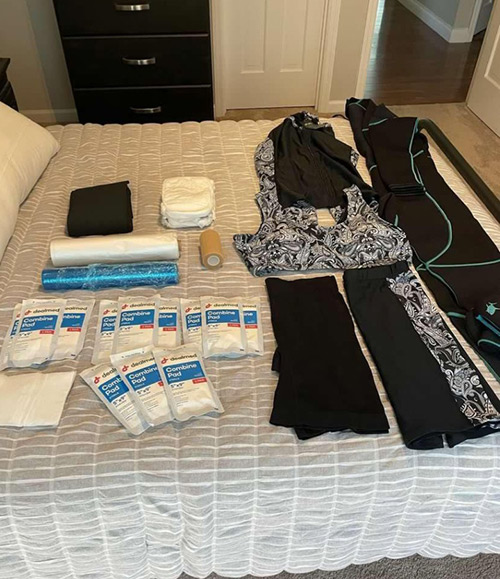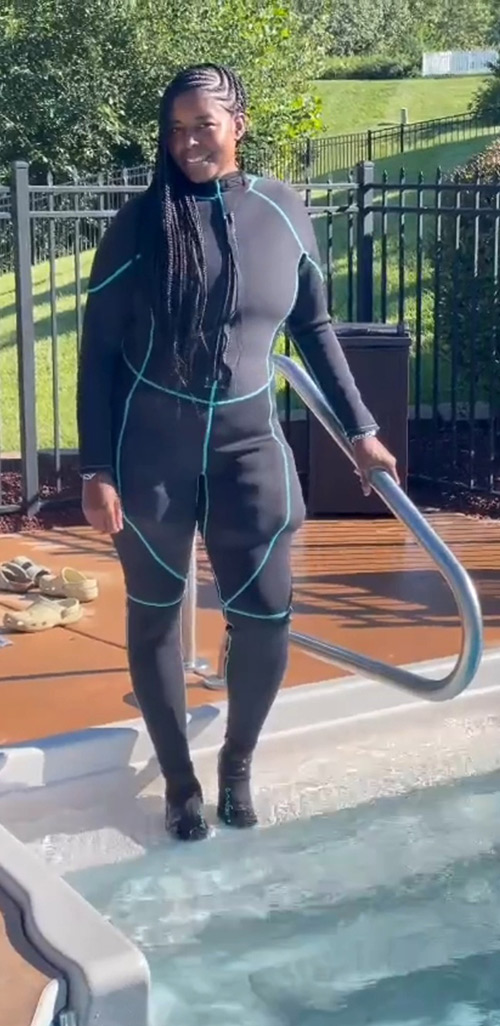PLC: Submerging in Water After 11 Years!
Disclaimer: Please do not try this at home. Consult your medical team prior to water activities.
I have not fully submerged in a bathtub, pool, the ocean, creek, spring, a dunk tank, or any water for that matter, in 11 and a half years. I received my first Left Ventricular Assist Device (LVAD) in January of 2012. So, to be accurate it has been 11 years and 8 months since I have fully submerged in water! Sounds crazy, right?
What is an LVAD? While the acronyms stand for Left Ventricular Assist Device; an LVAD is a life-sustaining medical therapy used to treat patients with end-stage heart failure. An LVAD has five main parts that are not all internal. A mechanical pump (attached to the heart), a driveline, an external controller and two external batteries.
LVAD patients are typically restricted from participating in certain activities such as bathing (showers are permitted), swimming and contact sports. So, I did some research, reviewed what other patients had experienced while swimming with an LVAD; and most importantly I spoke with my medical team. Even still, there were risks involved.
My journey to submerge in water with my LVAD for heart failure
Cover, wrap, and keep it dry
I celebrated the most recent holiday with family, as my youngest brother and his wife hosted a BBQ and pool party. So this was it! This would become my chance to fully submerge in water again.
Regardless if just for a moment, I was ready to go down this journey. I felt comfortable being that this was a family pool with a controlled environment; and family/friends present included a paramedic and scuba diver. Plus, as an 11+ year LVAD patient my family is well trained as my caregivers.

Pictured above is my brother Daniel, his wife Amanda, and I (Tina Marie).
I would only consider fully submerging in water once steps were made to protect my LVAD equipment, and the driveline exit site in my abdomen. Both of these measures were necessary to avoid equipment failure, electrocution, a driveline infection, or even death.
The plan was to layer up! I began by adding guaze underneath my LVAD dressing then added additional protection with ABD pads and tagaderm tape on top. Additional ABD pads were used around each battery and the controller then wrapped around the driveline and battery cords. ABD pads have super absorbency. So, in the event water did seep in the ABD pads would soak it up.
Everything was covered using Press N'Seal and Freeze N'Seal Wrap. Next, foley anchors were used to secure the driveline in place, as well as the cords to each battery.
It was time for the waist trainer to add an additional layer of protection. However, my abdomen was extremely swollen from fluid retention, which is one of the symptoms many heart failure patients live with daily. For me, fluid retention comes and goes, mostly presenting in my eyelids, chest, and abdomen. The waist trainer was extremely uncomfortable, so it was scratched.
After wrapping my batteries and controller to my legs there were just 2 steps remaining. I put on a 3 piece boy short swim set. Then completed the cover up with a wetsuit.

Pictured above are the supplies used to protect my batteries and controller. It took nearly an hour to wrap my equipment for added protection.
My supply list
- My LVAD dressing kit
- Tagaderm tape
- Foley anchors
- ABD pads
- Gauze
- Press N'Seal Wrap
- Freeze N'Seal Wrap
- Waist trainer wrap
- 3 piece swimsuit (shorts, bra top, long sleeve jacket)
- Wetsuit
Submerge, release, and reset

I stand all wrapped and ready to go.
With the most routine procedure there is always a risk that something could go wrong. My choice to fully submerge in water with my LVAD would be no different. Even-still, I would do it all over again.
Submerging was about more than being completely covered by water. It was a release of the limitations and restrictions brought on as a result of heart failure. It was letting go of everything I have been told I could not do. It was shaking off the stigma society has placed on me, and patients like myself. It was more than a release. It was a reset!
I was not expecting the rush of nerves. It was sort of like the excitement of riding a bike for the first time (again).

Emerging from the water felt so good!
What restrictions or limitations have you faced as a result of heart failure? How do you reset?
PLC: Tina Marie
Disclaimer: Please do not try this at home. Consult your medical team prior to water activities.
Join the conversation